ADHD and I went to therapy, so you don't have to
The 13 best therapy lessons & tools for thriving in life
This is our one big, beautiful chance at life, let’s stop trying to “just get through it”.
Let’s be honest. Life can be hard. With so much to tackle daily in a world that feels like it’s falling apart, it’s easy to slip into survival mode, looking to some future date when life will settle down and we’ll finally be able to manage and thrive.
To that end, may I just say… therapy is the effing best.
I realize we may all be at different stages of our own healing. I’m also aware that not everyone is as fortunate as I am to afford regular therapeutic services. But we ALL need healing, so I’m sharing some invaluable things I’ve learned throughout my journey to get you caught up (along with links to useful resources and some funny memes).
While I rely on a myriad of things to manage my ADHD and trauma, the following is a list of my favorite “tools in my toolbox” that I’ve gleaned from years of cognitive behavioral therapy (CBT), trauma psychotherapy, talk therapy, somatic therapy, ADHD skills classes, and more*. It makes my heart smile to share these “secrets” I only wish I had known decades ago.
*Keep in mind, I am a journalist, NOT a licensed therapist. If any of this resonates with you and helps you manage life better, GREAT! But I recommend, if you can, talking to a licensed professional for the real deal.
13 Best Therapy Lessons & Tools for Managing & Thriving in Life
1. Concentric Circles of Connection for prioritizing relationships - Not all relationships are created equal. When I realized I was *attempting to* put the same level of effort into all my relationships, my eyes were opened. This tool helps focus our time and attention on those who matter most starting with the inner ring and working outward. Let’s stop allowing people who don’t deserve our energy to monopolize it. We don’t need to be liked by everyone, especially if we don’t even really like THEM.
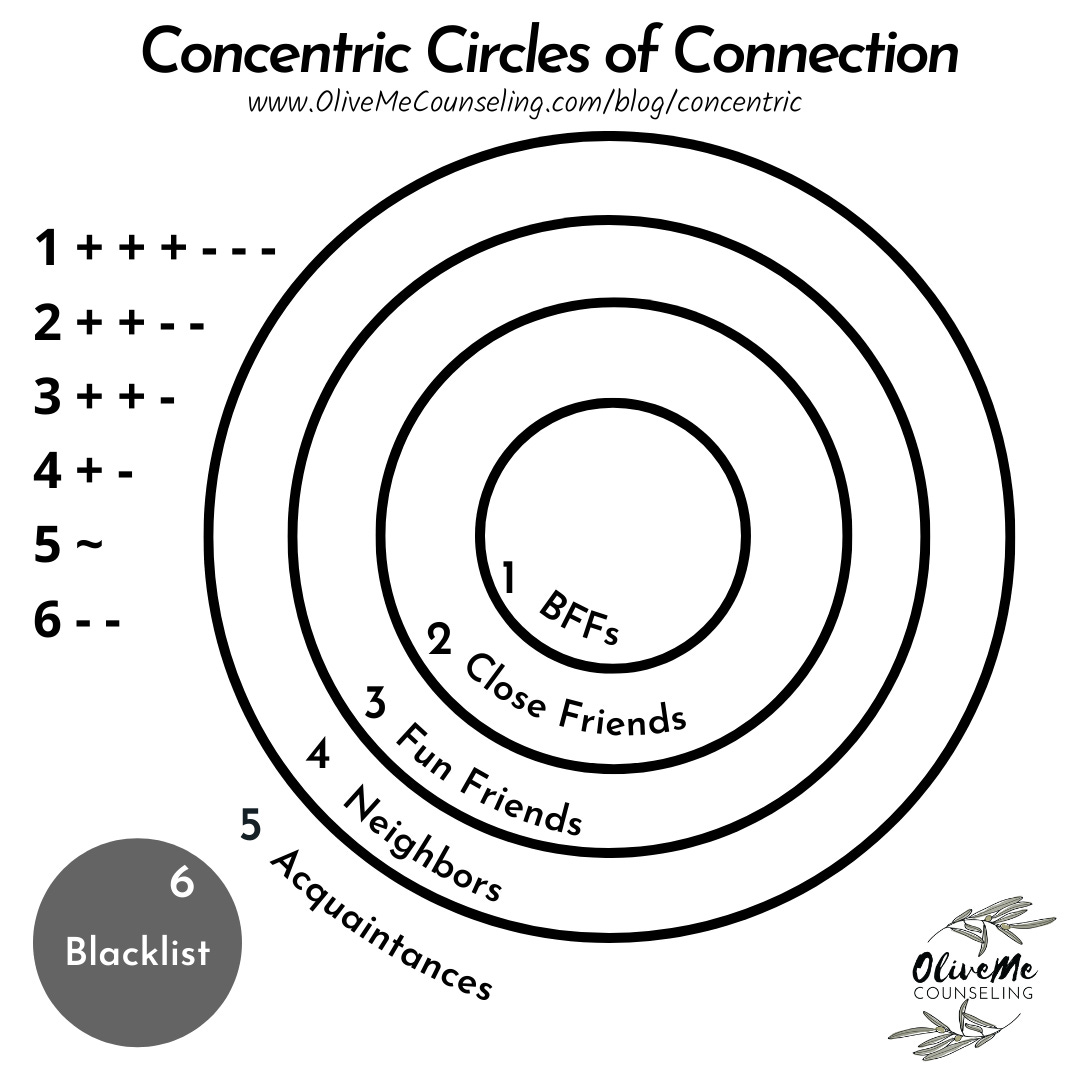
2. The Eisenhower Matrix for prioritizing tasks - Similar to how we struggle to prioritize relationships, ADHDers tend to have a difficult time distinguishing priority among tasks. This tool is awesome for helping to define which items to pay attention to first and which to put off or forget altogether.
3. List of cognitive distortions to challenge unhelpful thoughts - Our first thoughts are almost always wrong. Where do you think the phrase “on second thought” came from? We don’t have to believe our thoughts. We can watch them come and go… like passing clouds. And we can use our understanding of cognitive distortions to challenge or reframe our thoughts. Reframe, reframe, reframe.
4. Mindfulness practices to slow life down - Life is for enjoying. Learning this was revolutionary for me. If you find yourself (like I once was) saying things like, “I just have to get through this week or this event,” then you are not thriving. Slowing down, catching your breath, paying attention to the small things like the beauty in nature, your children’s little hands or laughs, or the way your shower soap smells can help ground you in the present. This is our one big, beautiful chance at life, let’s stop trying to “just get through it”.
Life is for enjoying. Learning this was revolutionary for me. If you find yourself (like I once was) saying things like, “I just have to get through this week or this event,” then you are not thriving.
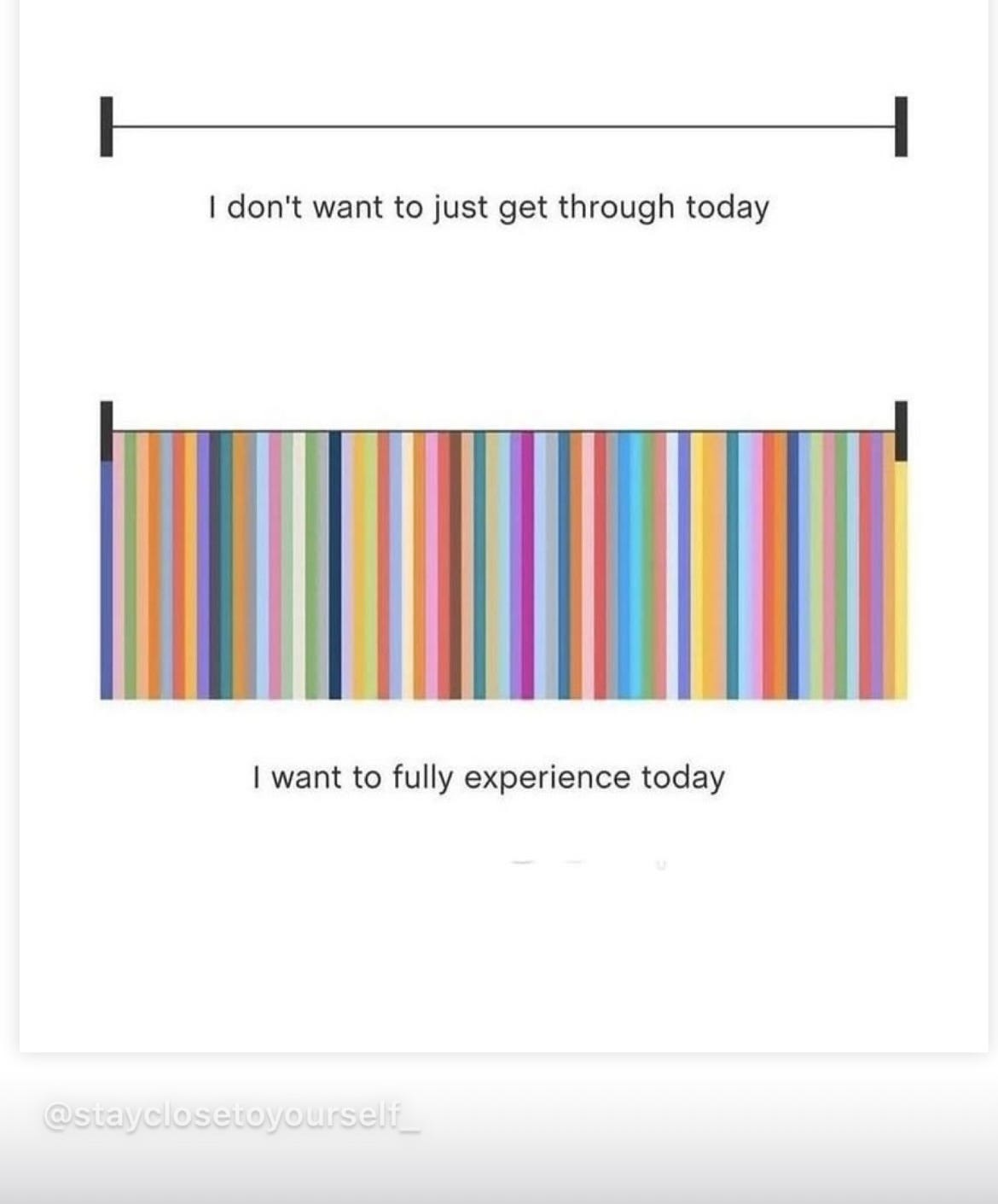
5. Using logic and facts to counter catastrophic thinking - All fears are not valid or real risks, a life-changing realization for me. One of my favorite therapists told me we can actually make Google (or WebMD) our friend and not our enemy. She said if I ACTUALLY look into the likelihood of my worst fears coming true, I’d realize how much time I waste worrying about things that will likely never happen. If you find yourself, like I was several years ago, stuck in the “what ifs?” of catastrophic thinking, try this phrase instead, “what if it all works out?”
6. Speaking to people in a way they can receive the message - There’s almost never a reason to raise our voices unless someone is in danger. Those of us with ADHD tend to struggle with removing emotion from our reactions, but I try to keep in mind that I’m more likely to be heard the more calmly and clearly I communicate. Try breathing deep and paying attention to how you state your your feelings, thoughts, and needs. If love, attention, and comfort are what you seek, remember you catch more flies with honey than vinegar. Or as my therapist put it, it’s hard to hug a cactus.
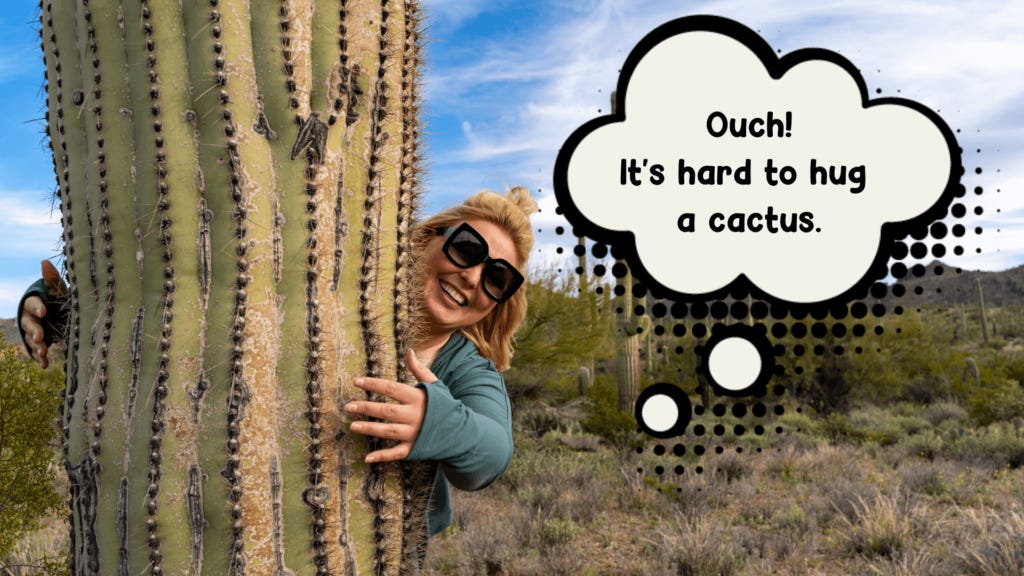
7. Using “I” statements as much as possible - In disagreements, it’s easy to get caught up in the other person’s wrongs. But pay attention to how often you are externally-focused. It’s best to avoid “you always”/”you never” statements and focus on the specifics of the disagreement at hand. “When you did X, I felt, Y.” Try not to bring past disagreements to the table (Ask my husband how good I am at this one *nervously smiles*). Throwing the kitchen sink at an argument will only derail the conversation from a productive solution.
8. Finding time cracks to achieve more than one thing at a time - I clean for guests WHILE listening to that podcast I’ve been saving. I journal while waiting outside my kid’s karate lesson instead of scrolling my phone. You’ll be surprised at how much this trick will make you feel like a superhuman.
9. Getting clear on our goals to align (and schedule) our actions to them - Think about what you want most in life: To get along with others? To enjoy time spent with loved ones? To be a good person? Now try to plan your actions and time with these goals in mind. Show me your calendar, and I’ll show you your priorities.
10. Our planner is our Bible - Building on the above, try to only have ONE planner or calendar where you input your to-do lists, tasks and important appointments, and bring it with you everywhere to help avoid overscheduling or overcommitting. I’m not perfect at this and still find myself checking multiple calendars and lists, but it’s all in my phone so at least all the information is with me at all times.
11. Somatic techniques to calm the nervous system - When I’m running late, my six-year-old won’t put her shoes on and I feel like I’m being chased by a hungry lion, I employ somatic techniques to calm my nervous system and align it to reality. When panic, overwhelm, or nervous system overload set in, ask yourself if you are really truly in danger. If my body is signaling danger but my environment is safe, I cross my arms over my body and tap bilaterally the opposite arm repeating “you are safe, you are not in danger”. This has saved me from overreacting many times.
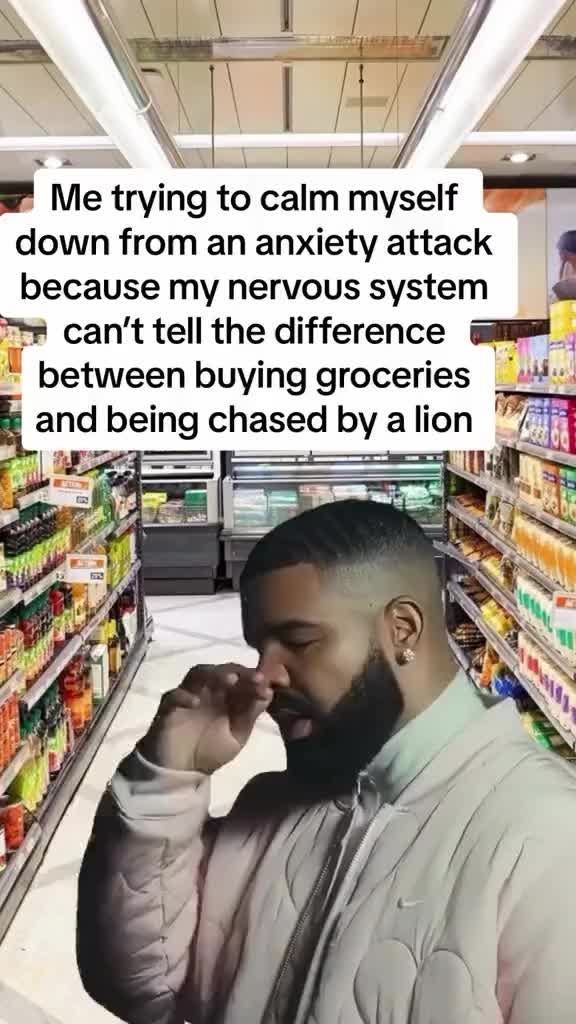
 Tiktok failed to load.
Tiktok failed to load.Enable 3rd party cookies or use another browser
12. Breaking down tasks - If a task feels too big and overwhelming it’s likely because it is. I break it down into the smallest bite-sized action steps. I know it seems counterproductive to add 10 items to your to-do instead of one, but it’s way easier to check items off when you can clearly see all the steps involved. I don’t care what anyone says, “laundry” is not one task. It’s bare minimum four or five (gather, pre-treat for stains, wash, move to dryer, fold, put away). What’s the best way to eat an elephant? One small bite at a time.
13. Talking to ourselves like a best friend - we’re with ourselves 24/7. The least we can do is be kind. Give yourself the same grace and compassion you would to your bestie in the same situations.
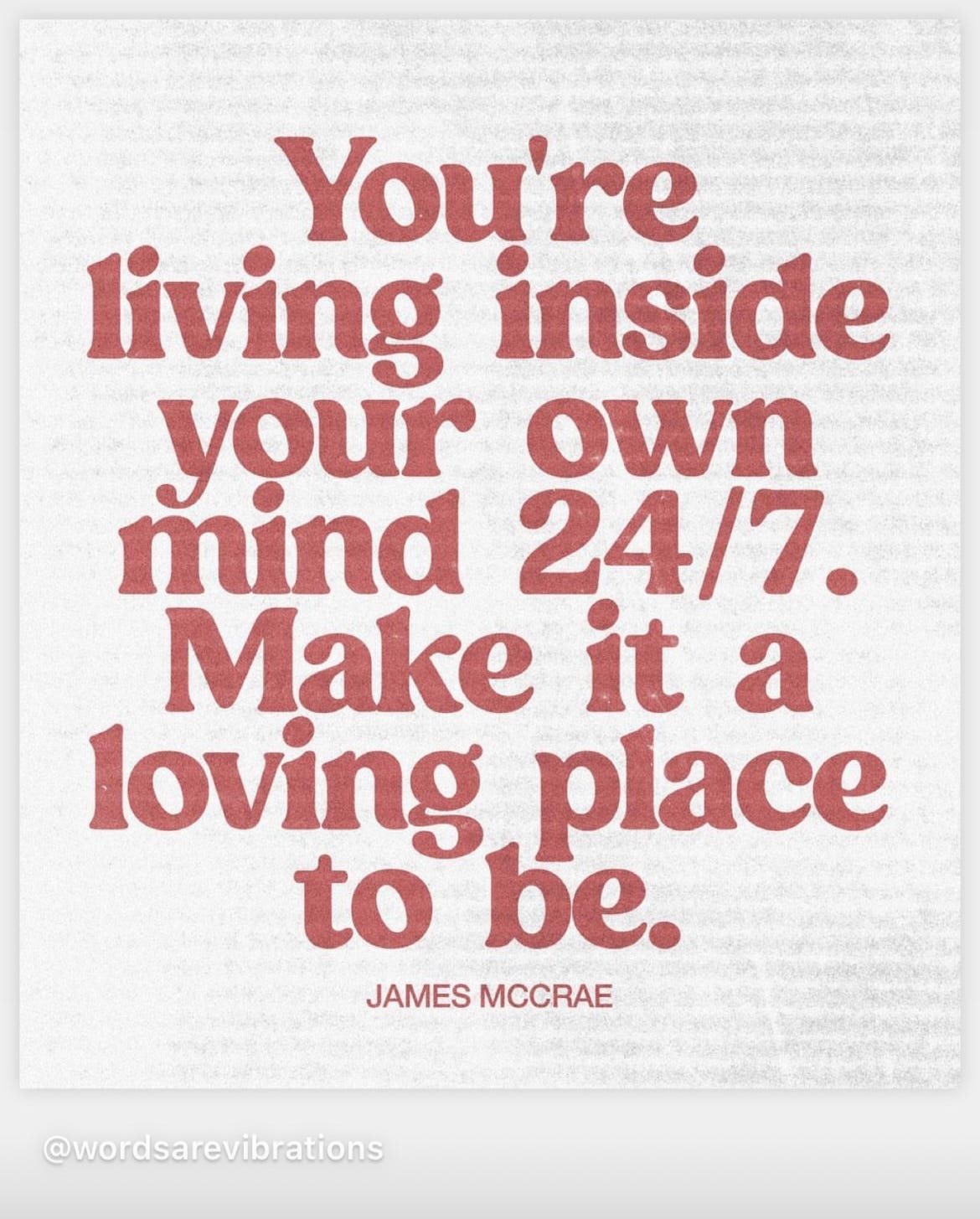
Additional Notes on Therapy
For someone with ADHD and a high level of impulsivity, I always loved the ideas and principles of CBT, but I found them unrealistic until I got on medication. I was only able to do the required pausing before acting once I was medicated.
Therapy also taught me how to look around my life and layer in “safety nets” that include my social, emotional, physical, and spiritual health. As I’ve continued healing, I’ve layered in socializing, feeling my feelings, therapy, medication, better sleep, exercise, hobbies, and purposeful work. That way if one area of my life isn’t going so well, I have those other nets to catch me before I plummet back into survival mode.
I wish you all well as you seek your joy. I hope you’ll save and share this page with anyone who might benefit from its messages and resources.








